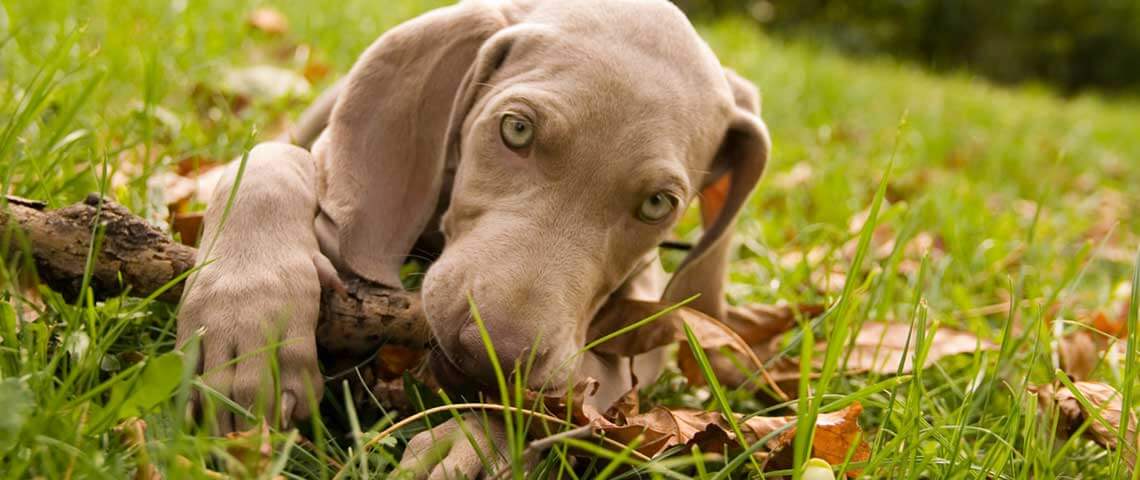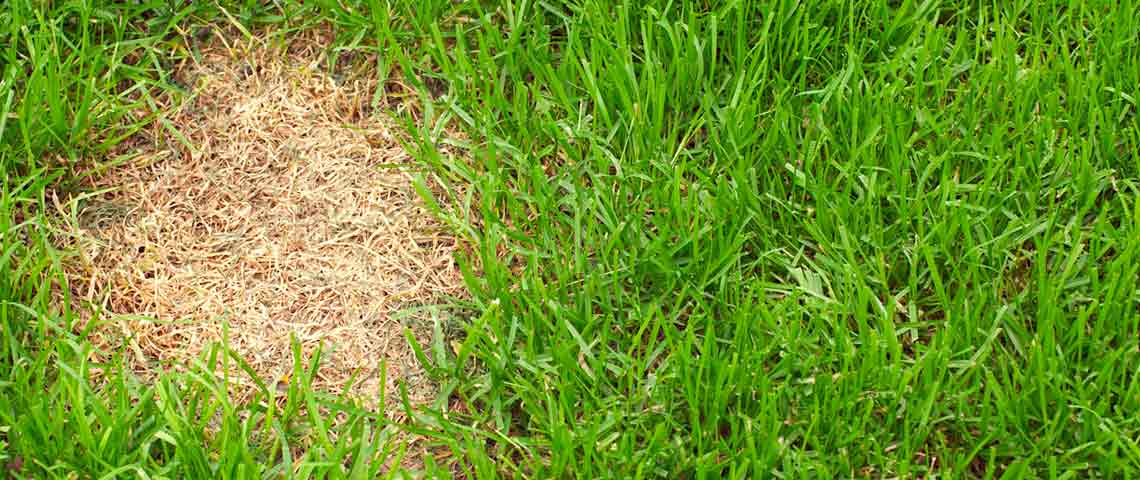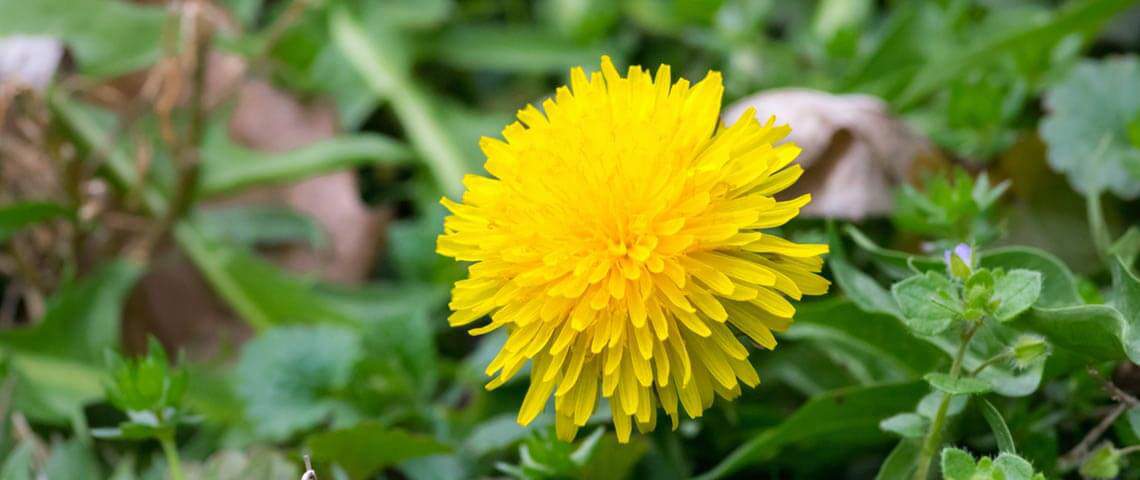How to Fix Dog Urine Spots on Lawns
Sharing your yard with a canine companion is one of the best parts of having a lawn — until dog urine lawn spots and other dog damage show up in your carpet of green. By learning how to fix dog urine spots on lawns and prevent other dog-related lawn damage, you and your dog can coexist harmoniously and enjoy a beautiful, lush lawn.
Get your four-legged buddy on board and follow these basics for simple, effective dog urine grass repair:
- Why Dog Urine Burns Grass
- How to Fix Dog Pee Spots On Lawns
- How to Fix Green Dog Urine Lawn Spots
- How to Fix Brown Dog Urine Lawn Spots
- How to Prevent Dog Urine Spots on Lawns
- How to Repair Dog Holes and Other Lawn Damage
Why Dog Urine Burns Grass
Even though your pet is man's best friend and loves your lawn as much as you do, dog urine wreaks havoc on grass and leaves burned, bare lawn spots or discolored turf behind. Dog urine lawn spots happen because of the high amount of nitrogen and related salts naturally contained in dog urine.1
Female dogs often get blamed when dog urine burns grass, but their urine is no different than that of male dogs.2 When concentrated urine collects in a single area, lawn damage happens — whether your dog is male or female. It's a lot like fertilizer burn.
All dogs that squat to urinate, including females, puppies, elderly dogs, small dogs and some adult males, can burn grass when they urinate in one concentrated area.
Because most male dogs lift a leg to "mark their territory" with spurts, they spread their urine over a larger lawn area. As a result, not as many dog urine spots occur with male dogs.
Minor lawn damage due to dog urine spots often resolves on its own as healthy new grass growth emerges. However, areas that your dog frequents for urination will typically need dog urine spot repair.
How to Fix Dog Pee Spots On Lawns
Fortunately, dog urine grass repair is a quick and easy lawn fix with the right information and lawn repair products. But it helps to understand the types of urine spots dogs cause on lawns. Two types trouble dog owners most: green spots and brown spots. Dog urine causes both types, but the reasons and remedies are different.
The most severe cases of dog urine lawn damage result in brown spots, which are areas of dead and dying grass. Lawns that are overly dry or already weak and stressed are especially susceptible to this type of dog urine damage. Whenever patches of brown grass appear, water the area deeply and repeatedly to flush the urine salts out of the surrounding soil. Minor dog urine damage may fill in with the surrounding grass over time, but you don't have to wait on nature.
Even though you can't bring dead grass killed by dog urine back to life, you can repair dog urine spots so they look as good as new. First, remove the dead grass from the area, and then repair the spot with Pennington Smart Patch II, available in premium Sun & Shade, Dense Shade, Tall Fescue, Bermudagrass and Zenith Zoysia mixes.
This all-in-one remedy for bare lawn spots combines drought-tolerant, water-conserving Pennington Smart Seed grass seed with professional-grade fertilizer, natural wood mulch that changes color when it's time to water, and a tackifier that keeps seed in place — even when planting on hills and slopes.
With Smart Patch's microbials at work, you don't need to worry about dog urine or other causes behind lawn spots. These beneficial microorganisms fight harmful microbes, enhance nutrient availability, fight lawn disease and improve your soil's health. The poor soil conditions that caused your lawn spots become things of the past, whatever their cause, so your new grass thrives.
Add in the patented American Ryegrass in cool-season Smart Patch II mixes or the fast-germinating Chewings fescue in Pennington Smart Patch II Bermudagrass Mix, and you get quick color and visible results in just days.
But that's not all. Beneficial microbials in Smart Patch II make it simple to grow beautiful, healthy grass where brown dog spots were.
Because your dog's urine is naturally high in nitrogen — an essential plant nutrient — Fido's favorite spots can become greener than the surrounding grass. This happens primarily on grass that hasn't had enough nitrogen from fertilizer.3 Your whole lawn could be that same rich color if it had the extra nitrogen it needs.
To determine if your grass lacks available nutrients due to soil pH or other reasons, take a soil sample and have it tested. Correct low nitrogen in your lawn by applying Pennington Full Season Lawn Fertilizer 32-0-5. One application and you're good for the season. You can also apply this product in split applications, as recommended by your soil testing lab. This fertilizer increases drought tolerance, which is very similar to tolerance to urine salts, while boosting nutrient uptake for a lush, green lawn.
Whenever you do lawn repairs, remember to keep your pet away from any area with new grass seed. You don't need to worry about your dog, but you do need to protect your future grass. New grass seed needs time to germinate and get established with strong healthy roots before it's ready for Fido to visit and play. A good rule of thumb is to let grass grow and mow it at least three to four times before you allow dog or people traffic.
How to Prevent Dog Urine Spots on Lawns
To help prevent dog urine spots around your lawn, the best plan of attack is to train your pooch to relieve himself in a specific area of your yard. Mulch an area of your landscape with natural wood mulch so it blends in well and Fido can urinate somewhere other than on your grass. Dogs usually respond well to the extra attention and praise that using their special spot brings.
Avoid using mulch made from cocoa bean hulls, even though it smells nice and chocolaty and looks good. Cocoa bean hulls can be toxic to your canine friend if he decides to see how things taste — and he probably will.
Some pet stores and even vet clinics offer dietary supplements that promise to change the nitrogen content or pH of dog urine. However, there is no scientific evidence that these products work. Some of these supplements are known to cause urinary system problems and other dangerous issues for some pets, such as calcium deposits in young dogs.1
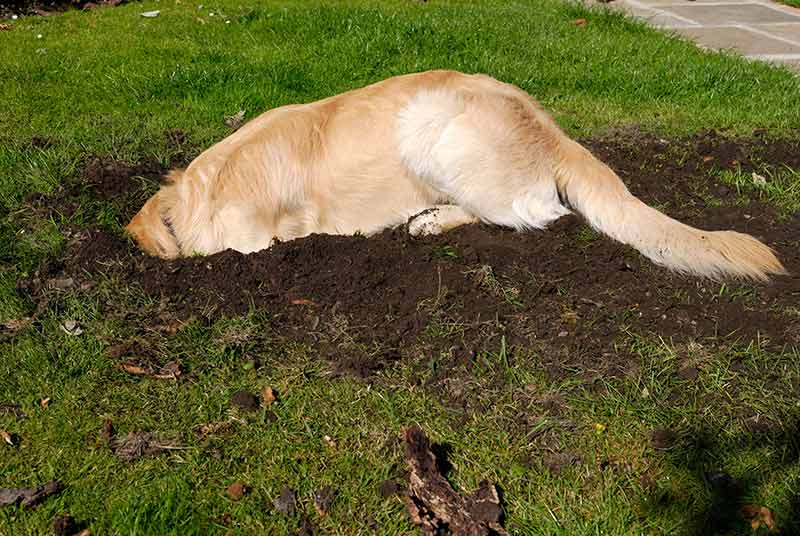
How to Repair Dog Holes and Other Lawn Damage
Dogs, especially puppies, have a lot of energy that they often devote to digging. They may dig for entertainment, to try and escape, to hunt prey such as moles — or just out of boredom. It can take some time to train your dog to stop digging once they develop the habit, so intervene early — with attention, training and praise — to stop digging problems right away.
Step in with quick lawn repairs to fix digging holes as soon as they appear:
- Fill holes with high-quality topsoil and gently compress the soil in the hole with your foot. Continue filling and compressing lightly until the solid soil surface is even with the surrounding area. Don't press too hard or you can create a pocket of compacted soil that inhibits healthy grass growth and requires aeration down the road.
- Apply Pennington Smart Patch II bare spot repair mixture to the surface of the soil according to label instructions.
- Water thoroughly and keep the mulch evenly moist until the grass is at least 1 inch tall. To help you determine when to water, the natural mulch included in Pennington Smart Patch II turns a lighter brown color when it gets dry and needs more water.
For other lawn areas hit with doggy damage, turn to Pennington Lawn Booster. This 3-in-1 product combines premium Pennington Smart Seed, professional-grade fertilizer and soil enhancer. It's guaranteed to grow quicker, thicker, greener grass in just one application.
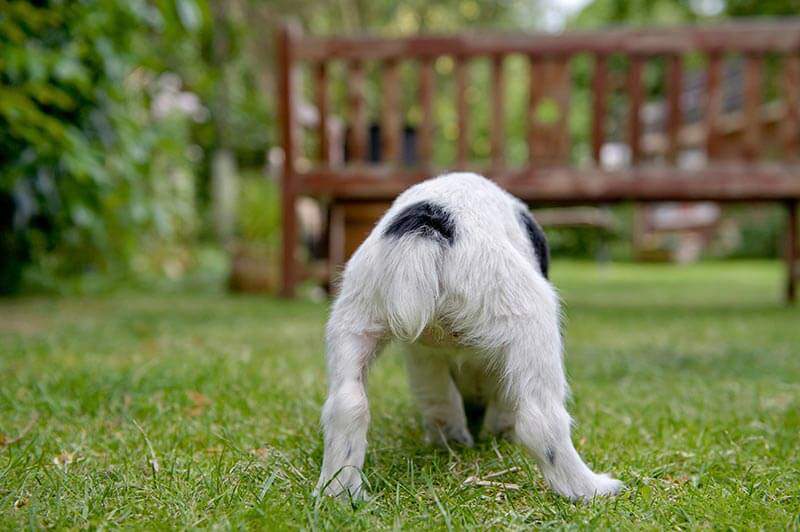
While you can't change your dog's instincts, you can recognize and prevent pet boredom and provide your canine pal with appropriate outlets for the extra energy that feeds his digging tendencies. Make sure he has plenty of toys to play with when you aren't around. It also helps to wear him out a little with backyard play or long walks.
For terriers and other types of dogs bred to dig for burrowing rodents, create an area just to satisfy those instincts. For example, build a sandbox and hide toys in it for your dog to find. Reward him with a treat and praise him for digging only in his personal sandbox.4
Owning a dog and having a beautiful lawn free from dog spots requires a little extra work. But time spent with your canine companion enjoying a lush, healthy lawn is worth the effort. With patience, proper training and premium Pennington lawn repair products, you can have the lawn you desire and keep your grass-loving pooch happy, too.
Always read product labels thoroughly and follow instructions.
Worry Free is a registered trademark of Central Garden & Pet Company.
- G. Miller and R. McCauley, "Dogs and Turfgrass Interactions," NC State Extension.
- A. Harivandi, "Lawns 'n' Dogs," University of California Cooperative Extension, 2007.
- C. Bigelow, et al., "Animal Urine Damage in Turf," Purdue Extension and University of Illinois Extension, May 2006.
- Dig This: How to Get Your Dog to Stop Digging," The Humane Society of the United States.
Sources:

